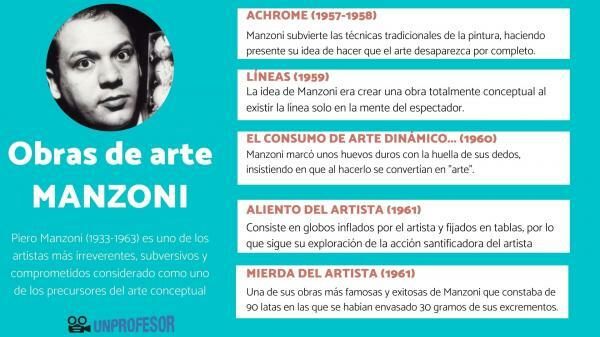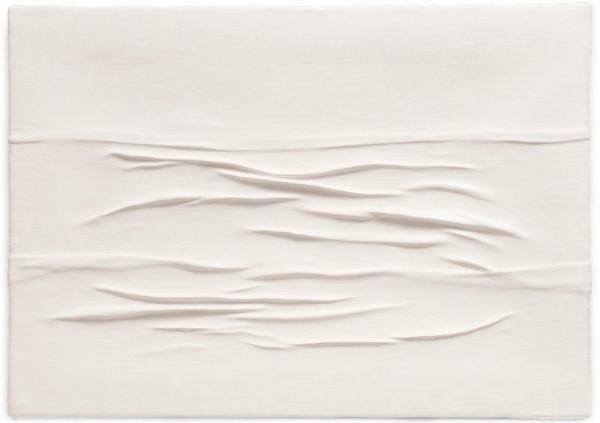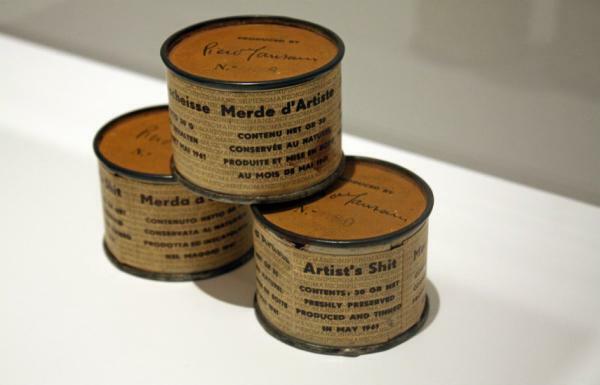Piero MANZONI: most important ART WORKS

Piero manzoni (1933-1963) is one of the most irreverent, subversive and committed artists of the french realistic art, although he can consider him as one of the forerunners of conceptual art or action art. The boredom of some artists for the rule of form over content, led young artists of the 60s to promote the idea or concept as a fundamental aspect of the work. Manzoni even came to consider that the artist's body is also an art producer.
In this lesson of unPROFESOR.com we present you what are the most important works of art by Piero Manzoni to help you discover one of the most surprising avant-garde artists of the 20th century.
Index
- Characteristics of the concept art of Piero Manzoni
- Achrome (1957-1958), one of Manzoni's important works
- Lines (1959)
- Consumption of dynamic art by the art-eating public (1960)
- Artist's Breath (1961)
- Artist's Shit (1961)
Characteristics of the conceptual art of Piero Manzoni.
Piero Manzoni was an Italian nobleman who turned his back on all the established norms of artistic production, becoming one of the
most irreverent and satirical artists even going so far as to make art with his own excrement.Everything is irony and humor, his work being the inspiration for movements after his early death, he passed away at the age of 29. Thus, Manzoni had a relevant influence on artistic movements such as Performance Artand in the conceptual art. Among the most outstanding characteristics of his work we point out:
- His work is irreverent, humorous, being transgressive and always seeking to provoke a reaction in the viewer. Thus, his work is an implicit critique of consumerism and how the Art market works.
- It was seen heavily influenced by post-war European avant-garde.
- In his artistic production the idea of the body as an art object is key and how all bodily processes can be used as artistic processes. An idea that will influence the Performance Art, being many later artists who will use their own bodies as artistic material capable of resisting commodification and thus subverting the art trade.

Achrome (1957-1958), one of Manzoni's important works.
Achromeis a series of works created with different materials and textures in which he uses kaolin (white clay) on canvas to compose works known as “colorless paintings”. To make this series of paintings, Manzoni was inspired by the monochrome works by Yves Klein. Among the materials used, straw, plastic and cotton stand out, Manzoni referring to them as “living flesh”.
In this work, Manzoni subverts both traditional painting techniques, making present his idea of making art disappear completely and it is the viewer who projects meaning into they. Absolute images that are limited to being, without expressing emotions or showing the world. An anti-art stance that recalls Manzoni's admiration for the Dadaism and for the readymade by Duchamp.

Lines (1959)
Lines it is another of Piero Manzoni's most outstanding works. This work consists of a single solid line, printed with a newspaper press on a long strip of paper that the artist then rolled up and inserted into a cardboard tube. After being on display, the two tubes made by Manzoni were sold on the condition that they never be opened. Only the packaging label On each tube he guaranteed who the author was, as well as the date and the exact length of the line printed inside.
Manzoni's idea was to create a totally conceptual work as the line exists only in the mind of the viewer. An immaterial and invisible work, since opening the seal of the tube meant that the work ceased to exist and ceased to be art. Be that as it may, and despite Manzoni's wishes, the tubes were opened and exhibited.

Consumption of dynamic art by the art-eating public (1960)
This was a performance made by Manzoni during a conference at the Galleria Azimut (of which he was co-owner with Enrico Castellani). In its course, Manzoni scored a few boiled eggs with their fingerprints, insisting that by doing so they became "art." He then ate one of the eggs before offering the rest to the public. Manzoni pointed out how the consumption of eggs fulfilled his wish that the work of art disappear, in addition to that, by eating the egg, the public became a work of art due to its contact with the hand of the artist.
This performance conformed to Manzoni's idea of considering that the artist has a "priestly power" and how apparently mundane or disposable objects were consecrated with the artist's touch. A job that can also be interpreted as a reflection of consumerism that dominated much of Italian society after World War II, as well as the Catholic notion of transubstantiation. Without a doubt, one of the most important works of art by Piero Manzoni.

Artist's Breath (1961)
And within the group of the most important works by Piero Manzoni also stands out Artist's Breath o Artist's breath. In this work he continues his exploration of the artist's sanctifying action. The work consists of balloons inflated by the artist and fixed on boards. As Manzoni himself said, "when I inflate a balloon, I inflate the soul into an object that becomes eternal."
Manzoni charged 200 lire for every liter of air he blew into the balloons, but as his breath slowly evaporated over time, the object was rendered "worthless." An idea of buying void or immateriality that was also haunted by Yves klein. According to critics, Manzoni also transmitted with this work the entire tragedy of World War II. The deflated balloon was a metaphor for the deflated body of a person surrounded by the aftermath of the war and in a culture that increasingly valued mass production over craftsmanship and creation artistic.

Artist's Shit (1961)
This is one of his Manzoni's most famous and successful works. A work that consisted of 90 cans in which, according to Manzoni, they had been packaged 30 grams of their excrement per can. Each was labeled "Freshly preserved, produced and canned in May 1961" in English, French, Italian and German. These cans were weighed and priced according to the price of gold at the time of production.
Merde d'Artist is funny, subversive and irreverent, but it is also a serious denunciation of the voracious consumerism post-WWII and a reflection of Manzoni's commitment to a conceptual expansion of the themes of his work. In addition, it is also a ironic and biting reply to his father.
He owned a canning factory (Manzoni used his father's cans in the production of the piece) and on his day he had commented to his son that his artistic work was 'bullshit'.

If you want to read more articles similar to Piero Manzoni: most important works of art, we recommend that you enter our category of Story.
Bibliography
- San Martín, Francisco Javier (1998). Piero Manzoni. Nerea
- Manzoni, C. (2000). An aesthetic of the rupture. Complete works, 41, 447-464.



